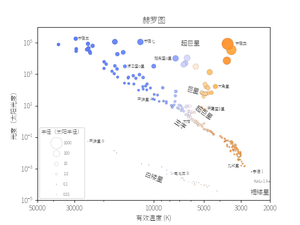Glossary term: 白矮星
Description: 达到八倍太阳质量的恒星预计会以白矮星的形式结束其生命。这其中就包括我们的太阳。白矮星的密度非常高,一颗典型白矮星的质量与太阳相当,但被挤压成了一个仅比地球略大的球。白矮星不再通过其内核的核反应产生能量,但会因为剩余的能量而发光。温度较高的白矮星会呈现出蓝色或白色,这是因为它们的表面温度非常高,会辐射出能量。白矮星的内核可能由氦、碳-氧或氧-氖-镁组成,具体取决于恒星的初始质量。白矮星并不会在其自引力作用下收缩,这是由于其内部存在电子简并压——一种量子现象——带来的阻力。电子简并压最大只能支持 1.4 倍太阳质量的白矮星。质量大于这个极限(称为钱德拉塞卡极限)的恒星残骸要么是中子星,要么是黑洞。
Related Terms:
See this term in other languages
Term and definition status: The original definition of this term in English have been approved by a research astronomer and a teacher The translation of this term and its definition is still awaiting approval
The OAE Multilingual Glossary is a project of the IAU Office of Astronomy for Education (OAE) in collaboration with the IAU Office of Astronomy Outreach (OAO). The terms and definitions were chosen, written and reviewed by a collective effort from the OAE, the OAE Centers and Nodes, the OAE National Astronomy Education Coordinators (NAECs) and other volunteers. You can find a full list of credits here. All glossary terms and their definitions are released under a Creative Commons CC BY-4.0 license and should be credited to "IAU OAE".
If you notice a factual or translation error in this glossary term or definition then please get in touch.
Related Diagrams
赫罗图
Credit: IAU OAE/Niall Deacon
License: CC-BY-4.0 Creative Commons 署名 4.0 国际 (CC BY 4.0) icons









